Centennial E3 – Rifts Beneath the Ocean Floor

Kathy examining readings from some of her research instruments.
Kathy Crane is a true adventurer. As one of the first women in the field of marine geophysics in the 1970s, she hypothesized and then helped discover the existence of hydrothermal vents on the Galápagos Rift along the East Pacific Rise in the mid-1970s and was one the first people to see many of the strange creatures that make their home in this improbable environment.
Using a temperature-monitoring system that she developed for a deep-tow seafloor towing system, she discovered temperature anomalies, as well as seafloor images of volcanic features, which provided strong support for her hypothesis about the existence of hydrothermal vents – cracks in the crust of the deep ocean floor where tectonic plates move away or towards one another, thereby releasing by hot magma that forms vents that heat the surrounding cold seawater.
Aboard the submersible Alvin, she also discovered never before seen animal life – mussels, clams, and most beautifully, tube worms – where it was once thought impossible, all of which led to led to the discovery of the biological process of chemosynthesis. Of the tube worms, Kathy said “they looked like roses. Pristine white stems that were part of the worm, and they were fixed holdfast onto the basalt rocks below them, and at the top was a head that was scarlet red with, looked like, pink petals coming out, which is where it got all its nutrients and everything taking the chemistry off of the ocean water. Absolutely beautiful place.”
Throughout, she had to deal with scientists sabotaging each other, build tools never used in the deepest marine environments, and survive aboard sea rickety research vessels. This episode of Third Pod has it all!
This episode was produced by Josh Speiser and mixed by Collin Warren.
Episode Transcript
Nanci Bompey: Hey, Lauren.
Lauren Lipuma: Hey, Nanci.
Nanci Bompey: Hey, Shane is in Alaska, away again.
Lauren Lipuma: Shane’s away so we’re taking over again.
Nanci Bompey: Again, here we are.
Lauren Lipuma: I’m excited. You know, I actually wanted to ask you, if we ever find aliens, what do you think they’re going to look like?
Nanci Bompey: [laughs] Like E.T.?
Lauren Lipuma: Yeah. Do you think they’ll look like E.T. or you think they’ll be different?
Nanci Bompey: I feel like they’ll look like E.T. They’ll probably not look anything like anything, but I like to think they’re going to look cute like E.T.
Lauren Lipuma: Maybe we’d be able to communicate with them.
Nanci Bompey: Yeah.
Lauren Lipuma: In some way. I feel like they-
Nanci Bompey: What do you think?
Lauren Lipuma: I feel like they would just be so weird we wouldn’t even know what they were.
Nanci Bompey: Right, we’d think they were like a plant or something.
Lauren Lipuma: Right.
Nanci Bompey: Exactly. It’s very interesting.
Lauren Lipuma: They could be way more sophisticated than us.
Nanci Bompey: Hmm. Hi, and welcome to the American Geophysical Union’s podcast about the scientists and the methods behind the science. These are the stories you won’t read in the manuscript or hear at a lecture. I’m Nanci Bompey.
Lauren Lipuma: And I’m Lauren Lipuma.
Nanci Bompey: And this is Third Pod From the Sun. Centennial Edition.
Lauren Lipuma: Whoo.
Nanci Bompey: Yeah, so aliens.
Lauren Lipuma: Aliens.
Nanci Bompey: I mean, it is pretty crazy to think about what aliens might look like, but we have some pretty crazy creatures here on Earth. Have you ever seen those, like on Planet Earth when they go down to the bottom of the-
Lauren Lipuma: The ocean.
Nanci Bompey: … And they’re wacky.
Lauren Lipuma: The anglerfish.
Nanci Bompey: Totally wacky-
Lauren Lipuma: Totally wacky.
Nanci Bompey: White wormy things.
Lauren Lipuma: Yeah, they are so unimaginable. Well, actually, that’s kind of what we’re going to talk about today in this episode, Nance.
Nanci Bompey: Oh, cool.
Lauren Lipuma: So, yeah, recently, our other producer, Josh Speiser, he and I talked with a world renowned oceanographer, Kathy Crane, and she has seen some of the most bizarre creatures in the world. Hey, Josh.
Josh Speiser: Hi, guys. So, Kathy was a pioneer in the field of oceanography. She was one of the first scientists to hypothesize and then, by going down to the bottom of the ocean in some of the earliest deep ocean submersibles, she discovered the existence of hydrothermal vents and many of the strange creatures that make their home in this weird, improbable, and difficult environment. The discovery of hydrothermal vents showed that life can survive in some of the harshest environments on Earth. It really changed how scientists thought about the kinds of lifeforms that can exist here. And so, Lauren and I talked with Kathy and heard her great and very unique story about how this discovery came about.
Kathy Crane: I became interested in becoming an oceanographer when I was really, maybe 10 years old or so. I wanted to be an oceanographer or an astronaut.
Speaker 6: Ignition. Lift off.
Kathy Crane: Basically, I wanted to just explore the world. I graduated from college in 1973 and nobody was being … No women allowed in the astronaut program those days. I graduated from geology and with a minor in German. I loved languages. And so, I applied to Scripps Institution of Oceanography. I was a student at Oregon State University and was accepted by Scripps Institution of Oceanography, much to my amazement. But, I couldn’t become an astronaut.
Nanci Bompey: So, at this point, we should probably explain what hydrothermal vents are, for those people who do not know.
Lauren Lipuma: Yeah, we should. So, hydrothermal vents are essentially where cracks in Earth’s crust at the very bottom of the ocean. So, when there’s a crack in the crust, when two tectonic plates are moving past each other, magma can rise up to the bottom of the ocean, essentially, and heat the really cold sea water there. This brings a lot of nutrients to the water and the water gets so hot, and as it moves and interacts with even more cold sea water, it creates this hydrothermal circulation. Lots of different kinds of life can actually live down there at the bottom of the ocean.
Nanci Bompey: Hmm.
Josh Speiser: Well, that’s a pretty straightforward explanation for something that’s pretty complex. But, before Kathy’s work, the idea of hydrothermal vents had never actually been definitively proven.
Kathy Crane: To me, it seemed pretty simple. You’ve got volcanoes down there. We knew that. They were all over the sea floor, or at some point. The point was, people didn’t know if they were active. Just like calling Mount Hood dormant. Well, someday it’s going to go off again. You know, things like this people would say because they’d never seen it. You have water and you have volcanoes, so you’ve got hot water, for goodness sakes. It’s not so difficult to … Well, right now for people to conceive of it, but when I went to Scripps, it was a great place because then … Well, for me, it was a great place, and all the people who applied there had to be real explorers at heart.
Josh Speiser: Right.
Kathy Crane: Adventures to the unknown. We’re kind of self-selected at that time. We didn’t even have very many books about the ocean.
I was thinking about a lot of different areas that I wanted to look, and I said, “I’m going to go to study volcanoes on the sea floor.” And actually, in 1972 … I went there in 1973. In 1972, over the Galapagos Spreading Center, there were temperature anomalies recorded by using this deep-tow instrument, which was really a sonar system, and it made sound images of the sea floor. It also had thermometer strung down below and the scientists there actually recorded some temperature anomalies in the order of like several thousandths of a degree, maybe a hundredth of a degree centigrade above background, which turns out to be quite a bit in a deep ocean, because temperatures get absorbed pretty fast and you’ve got super cold water anywhere anyway.
Josh Speiser: So, it’s because it’s at that depth, it’s stands out so-
Kathy Crane: Yeah, it’s almost a freezing temperature at the bottom of the ocean, in fresh water, but salt water it freezes at a lower temperature. That really intrigued me, and in fact, this wasn’t the first time these things have been discovered. In the 1880s, a Russian ship, the Vitas, discovered super-hot water at the bottom of the Red Sea. And then, there were several vessels after that from Sweden, from Germany, all going back to the Red Sea discovered hot sea brines down there. It’s a really contained area. It had been found before but just hadn’t reached really the American literature.
And then, other geologists had discovered by taking cores all across the East Pacific Rise and such, really rich in iron ore and other ores that you normally find in volcanic sediments that have been mixed with waters on land. So, to them, it was a big evidence that some big thing was going on. We weren’t anywhere near the first, but near the first to put these various discoveries together.
This engineer and I, we had been on the ship together, worked together a lot, so we decided and got permission to lower and enhance our temperature system on the rediligate, bring it much closer to the sea floor. We towed this instrument rather close, but this extension really helped us get hotter temperatures when we were over places. We went out several … 1975 to the North Atlantic near Iceland to track these things, to try to track them, because we hadn’t quite gotten to the Mecca, you know? Hadn’t gotten there yet. So, we had a lot of instrumentation design towards that. We were going over a mid-ocean ridge that runs into Iceland, Iceland sits on mid-ocean ridge. It’s super-hot and erupts all the time.
So, we had some also some difficulties with … I remember I was working … Marcia McNutt was on that cruise with me. Karen Wishner, so we had three women, I think. Anyway-
Josh Speiser: It’s a quorum.
Kathy Crane: Yeah, so I had managed to convince the physical oceanographer to give me some current meters to deploy onto the mid-ocean ridge, to keep track of information in stationary places so we could gather a larger picture, time wise, over this rather than just a transient towing something through an area.
This just shows, when not easy. We had two chief scientists on board who were not believing in any of this rigamarole, and they wanted to use these current meter in their own sedimentary studies and troughs. Interesting things, but we brought them on board to do this particular study, to try to track hot springs on the sea floor. I remember being awakened one night. I never slept all night, but anyway, Marcia McNutt was standing over me. “Kathy. Kathy. They’re throwing your current meters over the side in their own area.” So, I went up there and yeah, they had just tossed the last one off about several hundred miles away from where we were going to do this work. There was nothing I could do.
Josh Speiser: Why?
Kathy Crane: Why? Because these scientists are humans. They want what they wanted. This is not a glorified field. These are people out there competing with one another. They want to take tools, do their things. So, by the time we got to Iceland, we got there after a huge storm, almost a hurricane where we had to all stand in the back of the ship and tow this instrument in by hand because winches we couldn’t use them anymore. By the time we got to Reykjavik, the chief scientist came to me … A guy from Woods Hole. I won’t say his name but anyway. He said, “Kathy, you’d better change your thesis. You are never going to find hot springs on the sea floor.” Boom. So, it made me more and more, “Yes, I am.”
So, that was ’75. By 1976, there were some people at Oregon State who did believe in this. Jack Corliss and Jack Dymond and guys, and they had previously been at Scripps and were the ones who had studied the chemistry, sedimentary chemistry, on the flanks of the East Pacific Rise and had figured out there must be something big going on there. So, they actually managed to get some money to go back and check the Galapagos, where we had had expeditions by the deep-tow to map the place. I was put in charge for the Scripps group. We went over the spots where Bob and David had found these temperature anomalies, and sure enough, with our enhanced temperature systems, we were able to discover that, and for the first time we photographed clam shells.
Clam shells. We figured out, I figured out … They were big clam shells. But, at the time, our official chief scientist from Scripps was Peter Lonsdale. He was not a believer in these hot springs when we left. He was a real believer when we came back, when we arrived back in port in Panama.
They weren’t super-hot at the time. We found a tenth of a degree at that time. But that was even 100 times more than, or a thousand times more than what we had discovered before. We weren’t really sure why the clam shells were there all about, but I knew that it was an easy place to spot the vent areas because they stood out like snow against a city background or something. It was just like in your eyes. The side-scan sonar was transmitting up the cables, so we could really see where we were. Faults and volcanoes, and all these other things. They were all images by sound that we were looking at.
Spiess was a genius as a head of the … He was a genius inventor. He would let his students attach almost anything to the basic instrument. We call it a Rube Goldberg machine after we had little sedimentologists with little whirring fans collecting stuff from the water, biologists made a three tiered closing net so it was like a crocodile.
Josh Speiser: So, you’ve got this Rube Goldberg machine, you’re towing it behind the ship with all these different tools attached to it, and you’re watching on a video screen. Did you have an Archimedes moment, a Eureka moment when you saw something on the screen? Like, “Aha.”
Kathy Crane: I guess, in all … All the engineers there was looking for temperatures rising on the signal, so we noticed at the time, oh my gosh, there was clam shells there and so we know they correspond with temperature anomalies, and we weren’t really sure but I was pretty sure, of course. In fact, all of us, Peter Lonsdale became a convert at that time and the other folks on board were converts, I have to say.
So, I guess, just by seeing this temperatures there, we knew we were on the mark. That was a very, really exciting.
Josh Speiser: So, when did the submersibles come in?
Kathy Crane: My thesis advisor actually moved to England to be the head of the Office of Naval Research foreign office in London for a year. So, I had no real thesis advisor there. I reached out to, at Woods Hole, geophysicist, Dick Von Herzen, who did heat flow and things. He agreed to sort of shepherd me. He had been one of the chief scientists together … Well, he was put as … He was on the second leg of the 1976 voyage so we knew each other. I had all these photographs that we had taken of the Rift Valley and I said, “Well …” You know, he said, “Why don’t you come to Woods Hole and let’s make a big mosaic of all these photos?”
They were nervous about the Oregon State people and about, I think, Dick Von Herzen, because they had never worked with submersibles before. They talked about Ballard, about doing this, because he had spent a lot of time doing submersible work for his thesis off the coast of Maine, and they had done some stuff in the Mid-Atlantic Ridge earlier. Oh, and the Lulu, which is what we used as our support vessel, was really a giant pontoon boat, run out of Woods Hole. It held the Alvin and it had some containers on the top, one for the science van and then people slept down in the pontoons. They used to call it the biggest … It was like a flush toilet in the ocean because all the water went whoosh through the pontoons and then out. That’s what the scientists and the crew members called it.
Josh Speiser: So, what did you see?
Kathy Crane: Well, it was just great. Going down through the waters and seeing all these, from the very surface down, they had the lights on blinking and you would see all sorts of fish. Amazing life. I’d never seen it. It turned out no biologist had ever seen them either. But, this is in the upper water column. Yeah, when we had photographs of these things, sent them to biologists.
In my area, that dive, 12 degrees sea water, which was like a spa for all these fish down there. It was very unusual. You don’t have fish living at the deep sea. Everyone knew that.
Josh Speiser: How far down are you?
Kathy Crane: We were about 2,800 meters, I believe, yeah. Something like that. May be off my 300. I’d have to look in my book again. But, we went right to one of the clam bakes, and I realized, we realized when people went there that, okay, that was a great description. When I sent the first people down, “Look for the clam shells. They’ll guide you to the hot vents.” And, not really fully understanding that they were animal life that thrived off of these vents. We were seeing the dead shells because they were before sort of brownish and everything. Then, there were a lot of different animal forms, but we never saw the tube worms until we took a traverse along the Rift axis and they came across a very hot hot spring with all of these worms.
Josh Speiser: Can you tell us what they looked like?
Kathy Crane: Oh, it was like a … We called it a rose garden. I named it … I think I named it Rose Garden. They looked like roses. Pristine, white stems that were part of the worm. They were fixed, hold fast onto the basalt rocks below them. At the top was a head that was scarlet red with what looked like pink petals coming out, which is where it got all its nutrients and everything, taking the chemistry off the ocean water. Absolutely beautiful place.
Josh Speiser: And no one had seen these before?
Kathy Crane: No. No, no. Nobody. I remember, Emory had just taught me, from the Geographic, just taught me how to use a geographic camera. I just happened to have, in my port hole, the most exquisite view of this whole row of tube worms. Took a picture. I got a three page spread in the Geographic. He got small pictures. He said, “I don’t believe it. I just trained you how to shoot this picture.” I said, “It wasn’t me. They’re all there.”
Josh Speiser: Beginner’s luck.
Kathy Crane: Don’t have much choice, out of a six inch wide portal, what you’re going to photograph. Absolutely beautiful stuff. In fact, I may be mixing that with the next operation there, because they’re running in my mind now, so yeah. But, in ’77, yes, we really had fantastic stuff.
So, anyway, we were bringing these creatures back to the surface and had photographs. We called up to Woods Hole to the biologists and we were saying, “We’ve got all of these things. We don’t know what they are.”
Lauren Lipuma: So, what did it feel like for you when you went back to the Galapagos and you found the tube worms, and you saw that the vents were real and there was life there and everything? Did you feel vindicated? So many people had doubted you. What was this discovery like for you, personally?
Kathy Crane: The discovery was fantastic. In fact, my thesis advisor said, “You’re amazing, Kathy. I think you have the greatest intuition of anybody in my group.” And here was this Navy commander telling me this. I don’t know.
Josh Speiser: That’s like finding extraterrestrials in some ways, right?
Kathy Crane: They were, you know, to us. I was just so pleased that it became a really fantastic discovery for biologists, because there were no biologists out there when we discovered it. I think it was Karen Wishner who always went with us. She was one of the biologists who went everywhere to look for new things. A lot of biologists had been trained to go back and back and back again to try to find more and more out. But, I was always the kind of person … And, I think the other people who went into oceanography at the time, we really were the people who wanted to go over the next wave, over the next mountain, you know, not stay in one place.
Nanci Bompey: So, this episode has it all. It’s like a real, you know, crazy story. There’s scientists sabotaging each other, people coming up with these crazy tools to explore the ocean floor, and then finding these new species that they never saw before, like out of a sci-fi movie. It’s like real intrigue.
Lauren Lipuma: There is a lot of intrigue but actually, Nanci, if you like intrigue, you should wait for out next Centennial podcast episode, because we’re going to be talking about a top secret military base from the Cold War era that is buried beneath the Greenland ice sheet.
Nanci Bompey: Whoa.
Lauren Lipuma: Yeah. It’s kind of like-
Nanci Bompey: It sounds pretty sweet.
Lauren Lipuma: Yeah. Kind of like a James Bond movie.
Nanci Bompey: Ooh. I’ll definitely have to listen out for that. Well, I mean I will because I’m the host, so of course I will.
Lauren Lipuma: Yup, you’ll be hearing all about it. All right, everyone. That’s all from Third Pod From the Sun, Centennial edition.
Nanci Bompey: Thanks so much to Josh for bringing us this story, and of course, to Kathy for sharing her work with us.
Lauren Lipuma: And this podcast is also produced with help from Shane Hanlon, Olivia Ambrogio, Katie Broendel, and Liza Lester. And thanks to Colin Warren for producing this episode.
Nanci Bompey: We would love to hear your thoughts on this podcast. Please, rate and review us on Apple Podcasts, and you can find new episodes wherever you get your podcasts and, of course, at thirdpodfromthesun.com.
Lauren Lipuma: All right thanks, everyone, and be on the lookout for more Centennial episodes to come.
Nanci Bompey: And as well as our regular episodes of this podcast, which drop in the beginning of the month.
Lauren Lipuma: That’s right. Thanks, and we’ll see you next time.

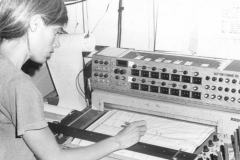
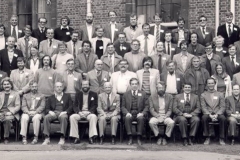
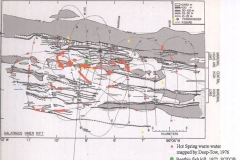
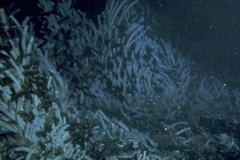
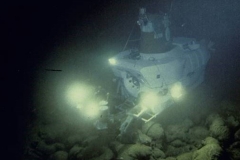
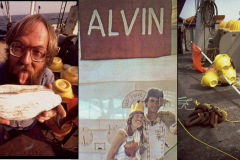
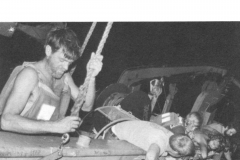
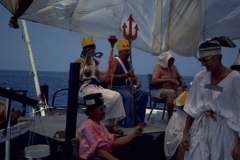
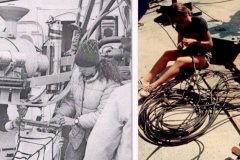
Wow! What a great story. It’s so fascinating (and sad) to hear the story of another woman (in the 1970’s no less!) who made a remarkable discovery and didn’t get much credit for it. I love the way she talks about the discovery. Thanks for bringing this information to us. I plan to share it with my students.
Thanks for your comment, Suzanne. We would love to hear what your students thought about Kathy’s story of discovery and perseverance.
She was my role model and my advisor. Thanks indeed… excited to learn about her